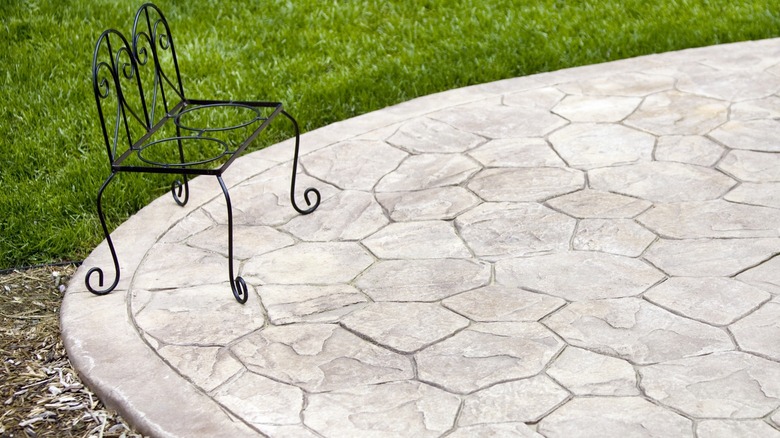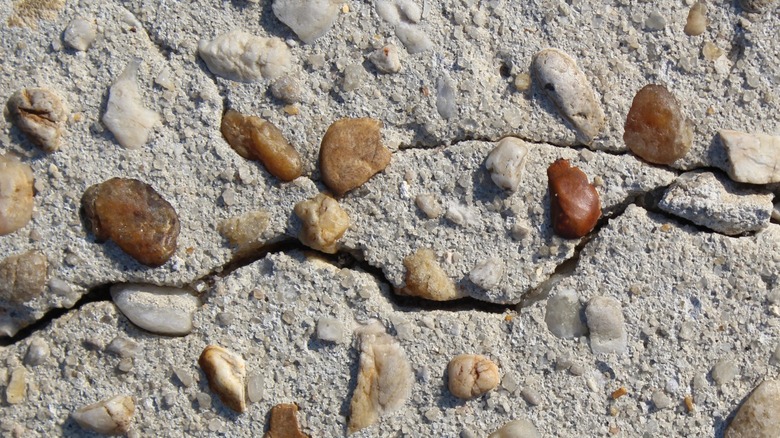The Patio Flaw That's A Major Red Flag For Home Buyers
If you're in the market for a house today, there are a few things to look for that may represent big red flags. When looking at homes with a patio, beware if it has a cracked foundation. Although it doesn't always mean disaster, it can be a serious problem. If there are weeds or grass growing through the cracks, this makes the problem potentially worse. It's definitely something you will want to speak to a concrete contractor about if it isn't addressed before making any kind of offer on the house.
Not all cracks are cause for alarm. We're going to talk about how you can evaluate any cracks you see in the concrete and how to know when it's time to call a contractor. We'll also talk a little about what causes cracks in the concrete in the first place so you can better understand and evaluate your situation. If you're house hunting, this concerns you.
What causes foundation cracks?
Because of the nature of concrete, there are two main kinds of cracks that occur in it: non-structural and structural. Non-structural cracks are formed during the curing process due to shrinkage that happens naturally, and they aren't always cause for concern. But sometimes they can still allow water to leak through. Structural cracks, on the other hand, are caused by foundation movement. These kinds of cracks can endanger a building's structural integrity if not repaired in a timely fashion.
One of the main reasons cracks occur is wet soil. Exact procedures must be followed during the concrete pouring as well, and even one tiny mistake can cause cracks to form. But it's normal for concrete to crack, and most of the time the cracks are cosmetic (non-structural) rather than structural. Sometimes, landscaping around the home's foundation can cause structural cracks if there is water retention underneath it. A concrete patio can sometimes cause one side of the foundation to stay dry while the other retains water, which can lead to uneven soil movement and structural cracks.
How to evaluate concrete slab cracks
There are some signs to help guide you in determining whether a patio foundation crack is structural or not. First, if the crack is ⅛ inch or wider, or if one end of the crack is wider than the other, these are bad signs. Generally, structural cracks will be larger than 3 millimeters, and one of the biggest indicators will be if the crack grows bigger over time. Look for any cracks on foundation slabs or beams, and for wide, gaping, diagonal cracks. Also look for a few vertical cracks in a row or a classic stair-step crack alongside the walls.
The concrete around the crack may either be flush or uneven. One of the main things to look for is whether any moisture or odor is coming through. On a patio, grass or weeds growing through could exacerbate the problem. The best thing to do if you're looking at a home that has any suspicious cracks in the foundation is to speak to a contractor before making an offer. Most problems like these can be repaired, but the cost may or may not be worth it.


